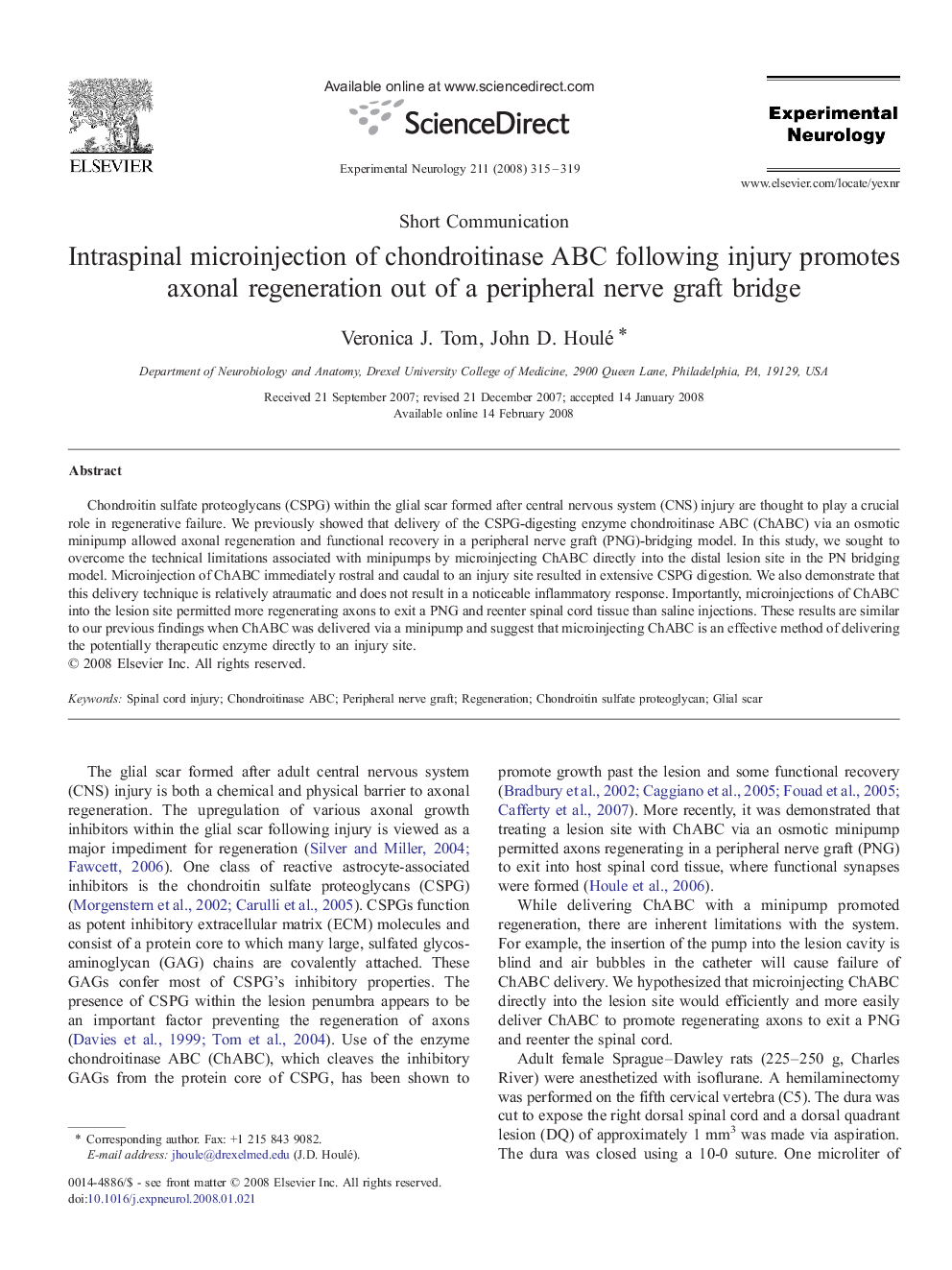| Article ID | Journal | Published Year | Pages | File Type |
|---|---|---|---|---|
| 3056682 | Experimental Neurology | 2008 | 5 Pages |
Chondroitin sulfate proteoglycans (CSPG) within the glial scar formed after central nervous system (CNS) injury are thought to play a crucial role in regenerative failure. We previously showed that delivery of the CSPG-digesting enzyme chondroitinase ABC (ChABC) via an osmotic minipump allowed axonal regeneration and functional recovery in a peripheral nerve graft (PNG)-bridging model. In this study, we sought to overcome the technical limitations associated with minipumps by microinjecting ChABC directly into the distal lesion site in the PN bridging model. Microinjection of ChABC immediately rostral and caudal to an injury site resulted in extensive CSPG digestion. We also demonstrate that this delivery technique is relatively atraumatic and does not result in a noticeable inflammatory response. Importantly, microinjections of ChABC into the lesion site permitted more regenerating axons to exit a PNG and reenter spinal cord tissue than saline injections. These results are similar to our previous findings when ChABC was delivered via a minipump and suggest that microinjecting ChABC is an effective method of delivering the potentially therapeutic enzyme directly to an injury site.
